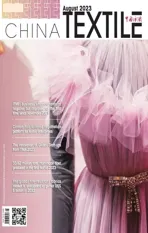How do top garment manufacturers develop energy-efficient and high-speed processes?
2023-09-18ZhaoXinhua,ZhongMengxia

Garment manufacturing requires a large number of resources such as energy, water, materials, and chemicals.Consequently, it creates a significant environmental footprint and waste pollution.Therefore, advanced apparel manufacturing develops energy-efficient and high-speed processes.They include ICT-based systems, computer-aided programs, fast digital printing,and robotic devices.These applications deliver automation and accuracy in quality control, production, and human resources management.As a result,emerging technologies in textile manufacturing replace unsustainable and inefficient practices to meet customers’ new demands
Sewts GmbH brings intelligent robotics
German startup Sewts brings robotics to apparel manufacturing by applying machine learning and computer vision technology.The startup’s software based on image processing automates the treatment of easily deformable materials and textiles.For instance, the Velum System accelerates laundry processes by automatically folding clothes.To achieve that, AI algorithms predict the behavior of dimensionally unstable materials in real-time.
TailrIs cloud-based platform streamlining garment production
Tailr delivers a unique combination of sizing and production features including tech pack generation, quality control and ease of integration.It can help brands raise revenue by reducing costs in sizing inconsistencies.
Coats Digital advances digital manufacturing management
US-based startup Coats Digital advances digital manufacturing management through tech-driven solutions.The implementation of Big Data Analytics and AI automates manufacturing key processes including design development, fabric buying, and shop floor execution.Also, the VisionPLM software estimates fabric consumption, raw materials capacities, and operational costs.This way, the startup’s software products simplify the management of critical operations making them sustainable and costeffective.
杂志排行
China Textile的其它文章
- ITMF: Business situation remains negative but improves for the first time since November 2021
- Create a digital avatar, everyone is a designer!
- Turnover of textile and apparel specialized market achieves recovery growth in H1 of 2023
- Demand for industrial textiles in the domestic and abroad markets declines in H1 of 2023
- 33.82 million tons man-made fiber produced in the first half of 2023
- Benefits of China’s home textile industry increase YoY in H1 of 2023
